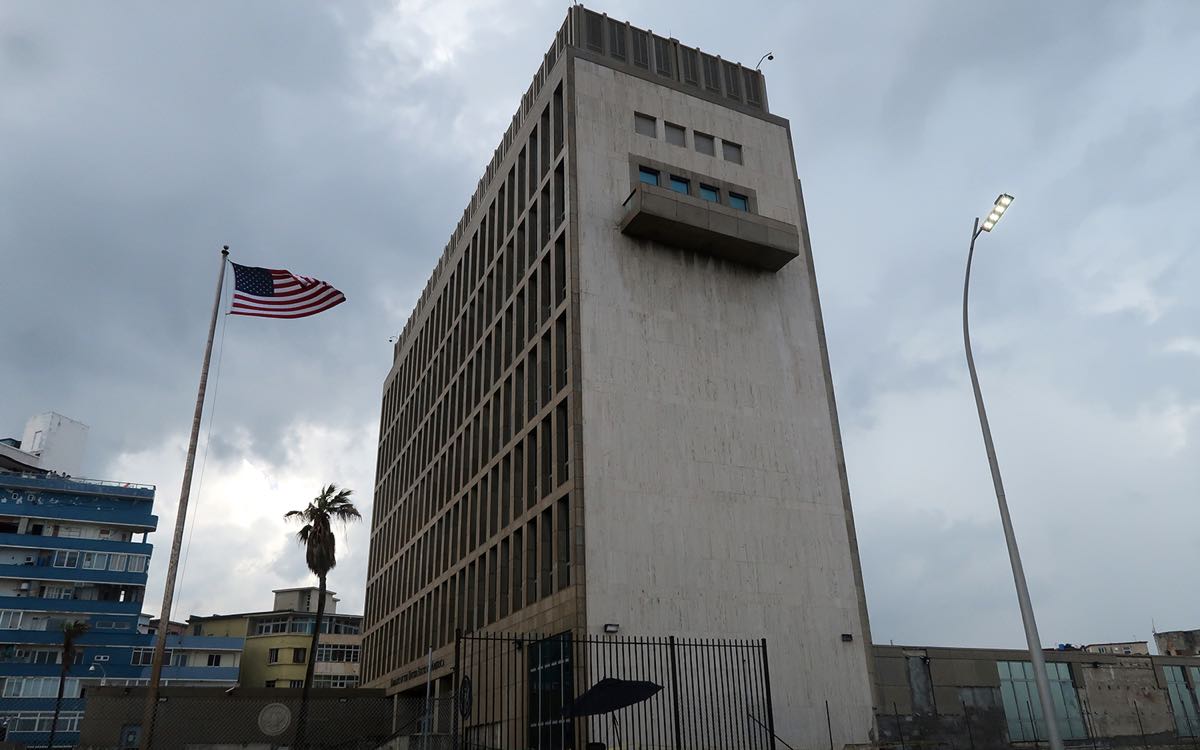Mysterious Sounds Recorded at Cuba Embassy Were … Crickets

In late 2016, dozens of staffers at the U.S. Embassy in Cuba fell sick after reportedly hearing mysterious noises in their hotels or homes. Afterward, they reported severe physical symptoms, including vertigo, headaches, ear pain and even cognitive difficulties and hearing loss.
Researchers obtained a recording of the sounds captured by embassy workers in Cuba, and analysis of the acoustic signal revealed striking similarities to insect calls. Further investigation identified the sounds as the call of the Indies short-tailed cricket (Anurogryllus celerinictus). [Flying Saucers to Mind Control: 22 Declassified Military & CIA Secrets]
The findings, which have not yet been peer-reviewed, were presented at the annual meeting of the Society of Integrative and Comparative Biology in San Francisco, and were published online Jan. 4 in the preprint journal BioRXiv.
In the months after alleged attacks occurred, some embassy personnel reported symptoms so debilitating that they were recalled from their posts in Havana, and returned to the U.S. for medical evaluation. American officials initially claimed that a secret sonic weapon was to blame, and Cuban diplomats were expelled from the U.S. in retaliation, Live Science reported in August 2017. (Other theories, such as microwave weapons, were also proposed.)
In the new study, researchers reviewed a recording of the potential offending sound — a "buzzing" at a frequency of 7 kHz, or 7,000 cycles per second, captured by embassy workers and released by the Associated Press. The researchers found that the buzz in the recording strongly resembled the song of the Indies short-tailed cricket, "in duration, pulse repetition rate," and in other aspects of the sound pulses, they reported in the study.
But there was one notable difference. Pulses in the AP recording were irregular, while field recordings of wild crickets captured more uniform trills. One explanation could be that the Cuban recording was recorded indoors, where sound could rebound off ceilings, floors and walls to create a complex echo chorus in an irregular rhythm, according to the study.
To test that hypothesis, the researchers played back recorded cricket calls through a speaker indoors and recorded the results. They found that when echoes were added, as the sound ricocheted between flat surfaces, the pulse structure of the recordings matched the one in the AP recording from Cuba.
Sign up for the Live Science daily newsletter now
Get the world’s most fascinating discoveries delivered straight to your inbox.
"This provides strong evidence that an echoing cricket call, rather than a sonic attack or other technological device, is responsible for the sound in the released recording," the researchers wrote. (The analysis explains only what was in this particular recording, something that may or may not have been related to the symptoms reported by embassy workers and others.)
The new study isn't the first to suggest that there was no "sonic weapon" behind the embassy workers' unusual symptoms. In February 2018, researchers documented the range of ailments suffered by 21 individuals who worked in the U.S. Embassy and reportedly fell ill in 2016 and 2017. They concluded that the symptoms simply didn't match those likely to be caused by weaponized sound waves, Live Science previously reported.
The findings suggest that experts need to look more closely at what may have caused these symptoms, "as well as possible physiological explanations unrelated to sonic attacks," the scientists wrote in the study.
- Dissecting Decibels: The Loudest Animals (Infographic)
- The 7 Biggest Mysteries of the Human Body
- Mind-Controlled Cats?! 6 Incredible Spy Technologies
Original article on Live Science.

Mindy Weisberger is an editor at Scholastic and a former Live Science channel editor and senior writer. She has reported on general science, covering climate change, paleontology, biology and space. Mindy studied film at Columbia University; prior to Live Science she produced, wrote and directed media for the American Museum of Natural History in New York City. Her videos about dinosaurs, astrophysics, biodiversity and evolution appear in museums and science centers worldwide, earning awards such as the CINE Golden Eagle and the Communicator Award of Excellence. Her writing has also appeared in Scientific American, The Washington Post and How It Works Magazine. Her book "Rise of the Zombie Bugs: The Surprising Science of Parasitic Mind Control" will be published in spring 2025 by Johns Hopkins University Press.









